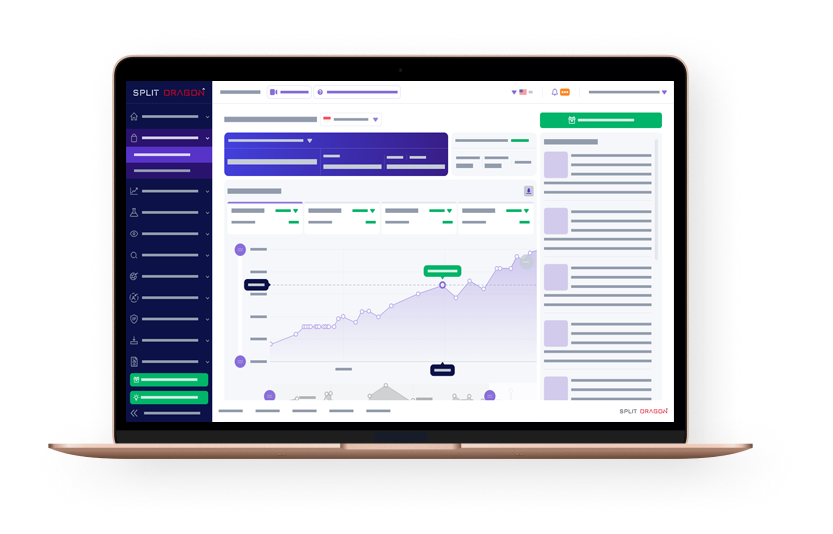Known to be pandemic proof, selling directly to consumers (known as Direct to Consumers or D2C) has become a favorite route of brands and manufacturers. However, while it is true that the development of technology paved the way for brands and manufacturers to survive almost all circumstances (including the pandemic), its effects have caused cutthroat competition between online retailers, and you must be equally cutthroat to survive.
To come up with strategies that will help you dominate eCommerce, you should have the right mindset in the business you’re in. In this article, we’ll point out 3 common misconceptions that are limiting your D2C strategies – and how to overcome them.
Problem #1: Treating marketplace as just a channel or a check out platform
Marketplaces are no longer just a channel or a checkout platform, it’s more than that.
From 2019 to 2020, Shopee Mall noticed a 2x increase in search volume for brand names, indicating that consumers are increasingly beginning their searches in-app.[*]
On the other hand, 44% of product searches start from marketplaces and Google saw a 1.8x increase of searches done in marketplaces than brand websites.
This shows that marketplaces provide a full sales funnel experience for customers.
For that reason, it’s very important to optimize the marketing approach at every touchpoint in the marketplace, from discovery to consideration.
To start, use marketplace tools that will give you useful insights to back up your decisions especially in optimization.
The best marketplace tools to consider for your D2C marketing strategy are:
AB testing tools – Split testing your product listing in the marketplace allows you to see which version gives you more conversion. This gives assurance that your listing will work well, thus stopping you from relying on mere assumption or gut feeling.


Keyword research – keywords are very important because it drives customers to your listing. By using relevant keywords in your product descriptions, you’re helping the search engine to attract the searchers to your shop or product.
Competitor tracking tool – tracking your competitor will give you an idea of how you’re doing in comparison to your competitors. This will help you make your products stand out inside the marketplace.
Problem #2: Belief that customer loyalty relies solely on brand name
Breaking news: Loyalty has shifted.
Thomas Zanzinger, CEO at Inriver, points out that brands can no longer rely on their reputation alone.[*] Instead, brands need to ensure that they meet customer expectations not just on the product level, but most especially in their purchase journey – starting with your product listing.
We are now living in a very visual world, and good-quality photos of products can be worth thousands of words and can be converted into thousands of dollars.
Another important thing to improve is your product description. Online shopping lacks human interaction but this can be filled using compelling copy and descriptions that will help the customer consider your product.
Where else can you improve the customer experience? Here are quick tips to optimize customer experience touchpoints:
- Provide easy ways to contact you – Fortunately, this is very easy in marketplaces because buyers can contact you directly for product, shipping, and price questions. Just make sure that you are very responsive when it comes to queries.
- Always respond to reviews – Acknowledge customers by responding to their feedback. If possible, make it more personal to establish authentic interaction. You might get repeat sale by doing this.
- Clear, concise copy – Avoid flowery words. Instead, make your copy easy to scan and concise while showing off the features and benefits.
- Use descriptive images – The ideal product images should enhance the product description. Use high-quality photos that allow the buyer to check closely so that it gives them an idea if it suits their needs.
Another key factor in building brand loyalty as part of your D2C strategy is to constantly remind customers about you through brand distribution. For example, when the customer uses the tumbler and sees your logo on it, they’d remember you every time they drink water. Or when they see your unique packaging, they’d remember you for it, they’d be reminded of your brand.
Again, marketers must understand that to build brand loyalty, keeping loyal customers engaged is as equally important as creating campaigns to acquire new ones.
Problem #3: Partial view of customer’s experience
Decades ago, understanding customers’ perspectives meant that you had to listen and put yourself in the customer’s shoes. You need to ask questions to fully grasp what’s going on in their minds to position yourself better and make a sale.
This is still almost the same in the digital world. The only difference is that you have little opportunity to interact because there’s no physical encounter. Therefore, you heavily rely on the data gathered from the eCommerce site.
The problem with organizations that have a limited record of your customers’ transactions is that they’ll have a hard time capturing and understanding the customer journey. Eventually, it will become harder for them to shape an ongoing relationship.
A full and comprehensive view of the customer’s experience will help you create data-driven D2C marketing strategies.
You’ll offer customers what they want, when they want it, and what they need next. This will also help you create new products, services, and experiences tailored to their specific wants and circumstances.
Approach your D2C business with the right mindset.
It’s not just a channel.
Brands and marketers may have a distorted sense of the reality of the customers. This leads to misaligned expectations, assumed knowledge, over or under aggressiveness, and the list could go on.
But right now, eCommerce, especially in D2C, products do not solely own the spotlight. Customer experience is now a huge factor, and the most effective way to deal with it is to have the right mindset in understanding the whole customer journey.
With this in mind, it will be easier for you to innovate ways to connect with your customers, while raising your revenues.
Need help in become a leading D2C brand in the marketplace? Our marketplace engineers can build a plan for you. We have the tech, techniques and team with solid marketplace expertise to take your brand to the top.






